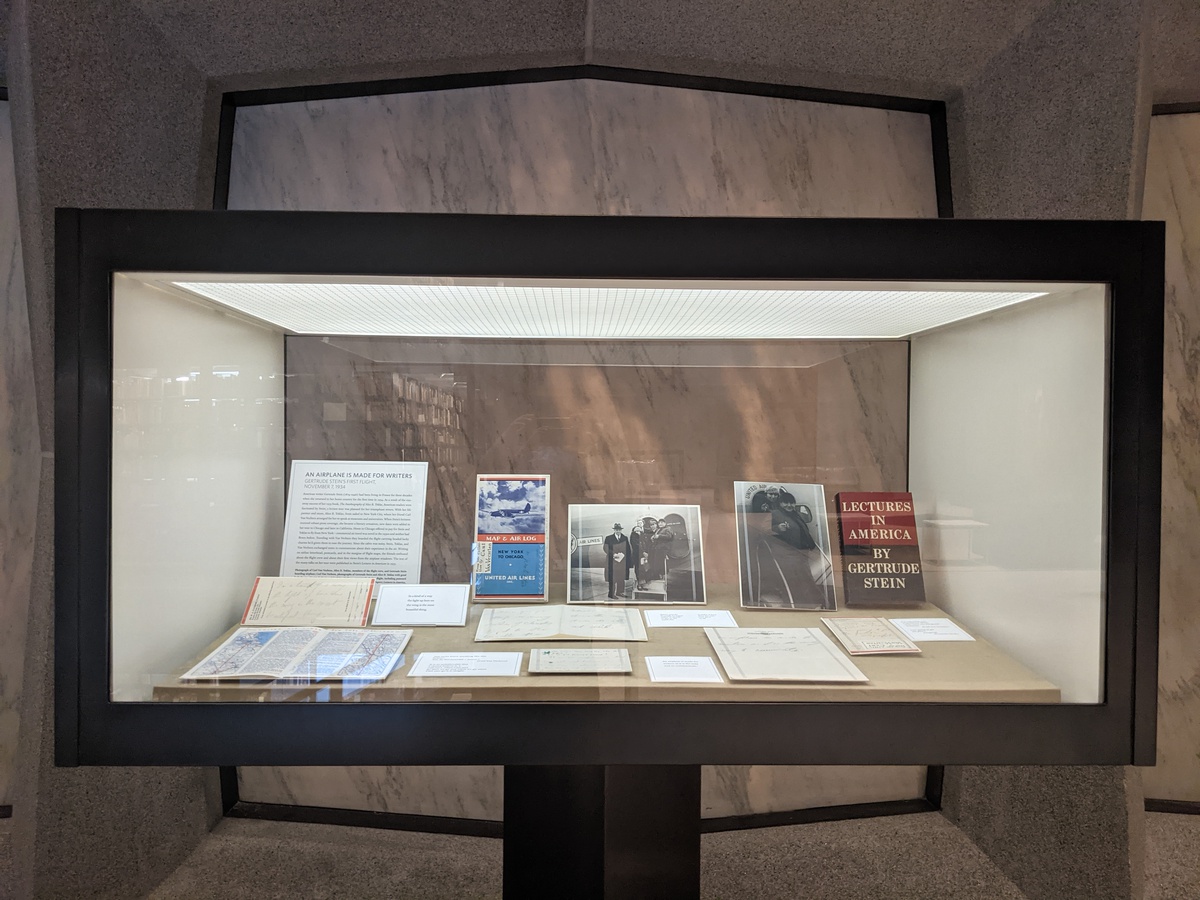Beinecke Library opens exhibition “Road Show” on writers’ travels
The Beinecke Library’s exhibition “Road Show: Travel Papers in American Literature” showcases how travel was documented by writers, and how it has served as an influence in American literature. The exhibition opened on Sept. 1 and will remain on view until Jan. 10, 2022.

Audrey Kim, Contributing Photographer
On Sept. 1, an exhibition called “Road Show: Travel Papers in American Literature” opened for viewing at the Beinecke Rare Book and Manuscript Library. The exhibition investigates how travel was marked and documented by figures across the American literary landscape, including Langston Hughes, Annie Dillard and Gertrude Stein, among others.
Because it was originally planned for installation during the summer, when the Beinecke Library typically welcomes its largest numbers of tourists and off-campus visitors, the exhibition includes a diverse range of materials that can be enjoyed by both scholars and casual viewers alike. Students can view items such as photographs, sections of notebooks, telegrams and letters from writers and artists including Georgia O’Keeffe and Joe Brainard.
“There’s all different ways of thinking about travel,” said Nancy Kuhl, curator of poetry at the Yale Collection of American Literature, in a video covering the exhibition. “Certainly, we were thinking about tourism, and traveling for leisure, but the archives at the Yale Collection of American Literature also document writers in exile, writers who are refugees, many of whom then turn those experiences into works of literature.”
According to Kuhl, the project started as a conversation between fellow curators Timothy Young and Melissa Barton about the ways writers’ archives might document travel of different kinds, and what people today could learn from literary archives about the travels of entertainers, expatriates, journalists, migrants, translators and tourists, among other figures.
The exhibition featured a series of vignettes, with each section devoted to a particular trip, medium, or work of literature. Each vignette is enclosed in separate display boxes at the Beinecke that visitors can walk through, including a section on Truman Capote’s 1959 trip to Holcomb, Kansas, inspiring his novel “In Cold Blood,” and the 1957 trip that writer and novelist James Baldwin took to Georgia and Alabama during the civil rights movement.
Exhibits production manager Kerri Sancomb oversaw the whole process of production and layout, making sure that “all parts are speaking and agreeing to one another,” along with exhibit technician Megan Czekaj.
“One thing that is interesting and unique to Nancy is that she likes to tell the whole story. For example, instead of just showing one side of a postcard, we’ll be showing both the front and back,” Sancomb said. “There are upwards of 400 objects in the exhibit, so having these vignettes allows for visitors to come to a new section and have a new experience each time.”
Timothy Young, curator of Modern Books and Manuscripts at the Beinecke, also organized a companion exhibition currently on view called “Imaginary Voyages,” which focuses on how writers have used the theme of travel to newly-discovered lands and planets to create fantastic tales. The companion exhibition includes materials from Hans Christian Andersen’s fairy tales and Mark Twain’s last work published during his lifetime, “Extract from Captain Stormfield’s Visit to Heaven.”
“Many of these novels and stories focus on encountering ‘the other,’ whether they are terrestrial neighbors whose existence was unknown to explorers or imagined alien races who serve as allegorical characters for discussions of difference and for commentary on politics and human behavior,” Young said. “Other works are pure fantasy, presaging the science fiction genre.”
In addition to co-curators Kuhl and Young, student curators Raffaella Donatich ’20, Isabelle Laurenzi GRD ’24 and Rachel Kaufman ’19 also assisted with the exhibition.
“Road Show: Travel Papers in American Literature” will remain on view until Jan. 10, 2022.








